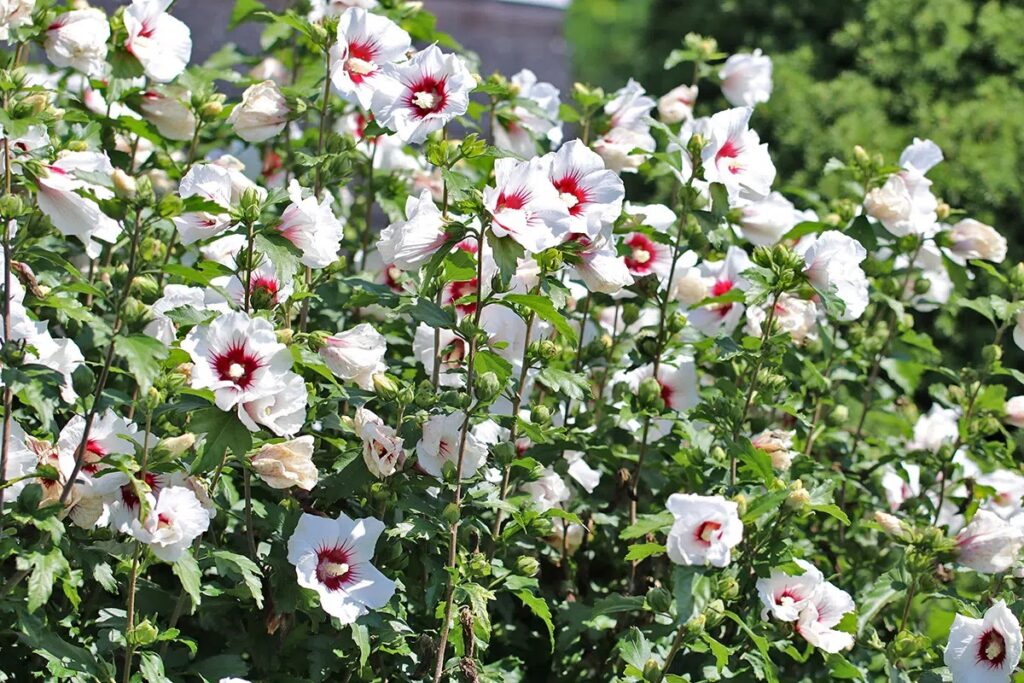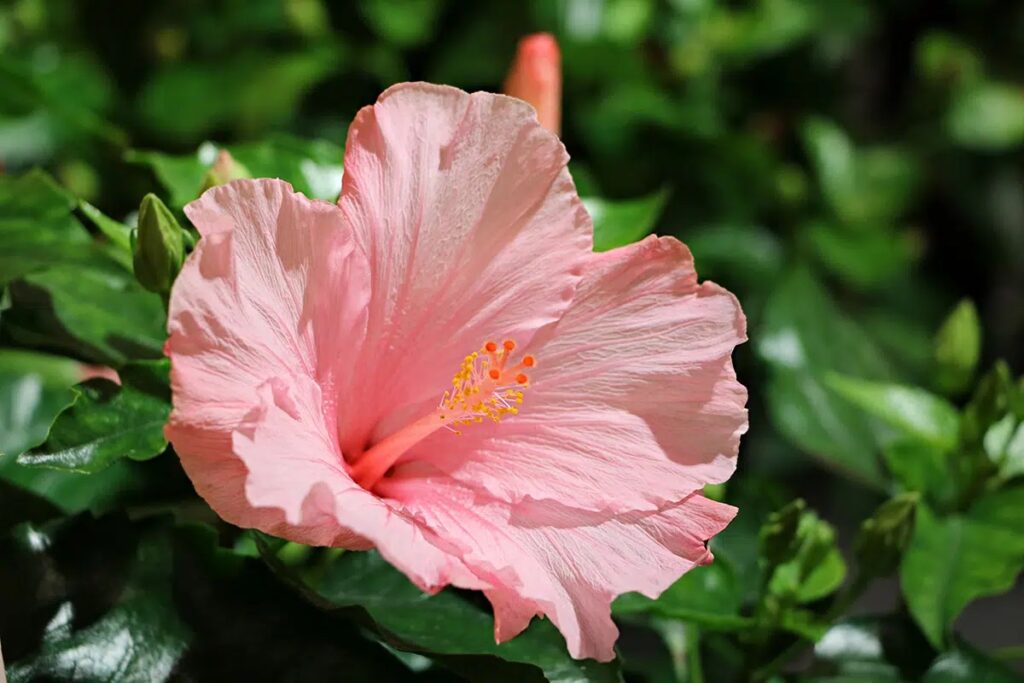The flowers of the hibiscus are eye-catching. There are more than 500 species of the plant family to choose from, which thrive in the garden or in the home. But are the flowers of the plant edible?
The hibiscus is a genus of plants belonging to the mallow family.
Contents
- 1 The use
- 2 Are hibiscus flowers poisonous?
- 3 Edible hibiscus flowers
- 4 Chinese rose marshmallow (Hibiscus rosa-sinensis).
- 5 Bush Hibiscus (Hibiscus syriacus)
- 6 Marsh marshmallow (Hibiscus moscheutos)
- 7 Frequently asked questions
- 8 How to make tea from hibiscus?
- 9 What are the ingredients of hibiscus?
- 10 When do the plants bloom?
- 11 Author
The use
The occurrence of the plants depends on the species. Often they are used as ornamental plants in gardens or parks. However, specimens of the genus Hibiscus can also be found inside houses.
In addition, hibiscus tea also enjoys great popularity. Individual components of the hibiscus plant are suitable for cooking, while the flowers are said to have a healing effect.
Are hibiscus flowers poisonous?
When used properly, hibiscus is non-toxic. This is true for the entire plant:
- Flowers
- Roots
- Leaves

Especially adults and pets can safely consume the plants without getting health problems. Admittedly, not every part of the flowers or fruits tastes really delicious. However, the species of the hibiscus plant are not poisonous, so you can eat them without any problems. For children, excessive consumption can cause health problems due to some of the ingredients in the plants.
Edible hibiscus flowers
Whether hibiscus flowers are edible or inedible depends on the species. If you choose the right plant species, you can eat the flowers without any problems. Below are some examples:
Chinese rose marshmallow (Hibiscus rosa-sinensis).
Chinese rose mallow is a plant species that prefers the warmth of the sun. However, you should not place the plant in full sun. The magnificent flowers can be eaten raw. The anti-inflammatory effect makes the species a medicinal plant. The flowering period takes place from June to August.

Bush Hibiscus (Hibiscus syriacus)
In our climes, the hibiscus is widespread. The flowers can reach a diameter of up to seven centimeters. Meanwhile, the bush hibiscus blooms from July to September. In a warm and humid place, the colors shine pink, blue, purple or white. These are edible raw and cooked. At the same time, the bush marshmallow makes a great addition to desserts, so you can eat the decoration without worry.
Marsh marshmallow (Hibiscus moscheutos)
The marsh marshmallow stands out because of its large flowers. These can grow up to 30 centimeters wide. In a nutrient-rich soil, the plant grows quickly and bushy. Meanwhile, the attractive flowers are suitable for decorating salad, tea and co. The high content of vitamin C is another argument to eat the hibiscus flowers. Between July and October, the plants grow up to two meters high.
Frequently asked questions
How to make tea from hibiscus?
The flowers of the plant are ideal for making a delicious tea. The high content of vitamin C strengthens your immune system. To do this, first dry them and then pour hot water over them. After a few minutes, the tea can be enjoyed cold or hot.
What are the ingredients of hibiscus?
Naturally, a significant part of the plant consists of oil. In addition, there are various acids, secondary plant substances and mucilage. Thanks to the combination of ingredients, the plants offer added health value.
When do the plants bloom?
Plants of the genus Hibiscus bear magnificent flowers between spring and autumn. Especially cultivated specimens are full of colorful flowers. These shine in different colors and a size of 20 centimeters. Common colors are pink, orange, white and yellow.

